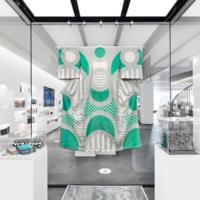Considering the importance in the history of Japanese Buddhism of Nichiren, the 13th-century monk who founded the leading sect that bears his name, it is surprising that the exhibition that just opened at the Tokyo National Museum in Ueno is the first large-scale attempt to gather and display art objects related to him and his sect.
Timed to mark the 750th anniversary of the first declaration of the beliefs of the Nichiren (aka Lotus, or Hokke) sect during the Kamakura Period (1185-1333), "Nichiren -- Art and Belief" comprises an impressive 161 items, of which no fewer than 51 are designated important cultural assets or national treasures.
As the exhibition's title may suggest, these exhibits are not restricted to Buddhist artifacts, but include pieces by such renowned Edo Period artists as Honami Koetsu (1558-1637), whose revival of court culture presaged the Rimpa style, and Tawaraya Sotatsu (died ca. 1643) who founded the Rimpa School. Also represented are the celebrated Ogata brothers -- designer and calligrapher Korin (1658-1716) and potter and painter Kenzan (1663-1743) -- alongside artworks by the ukiyo-e masters Katsushika Hokusai (1760-1849), Totoya Hokkei (1780-1850) and Torii Kiyomitsu II (1787-1868).
















With your current subscription plan you can comment on stories. However, before writing your first comment, please create a display name in the Profile section of your subscriber account page.